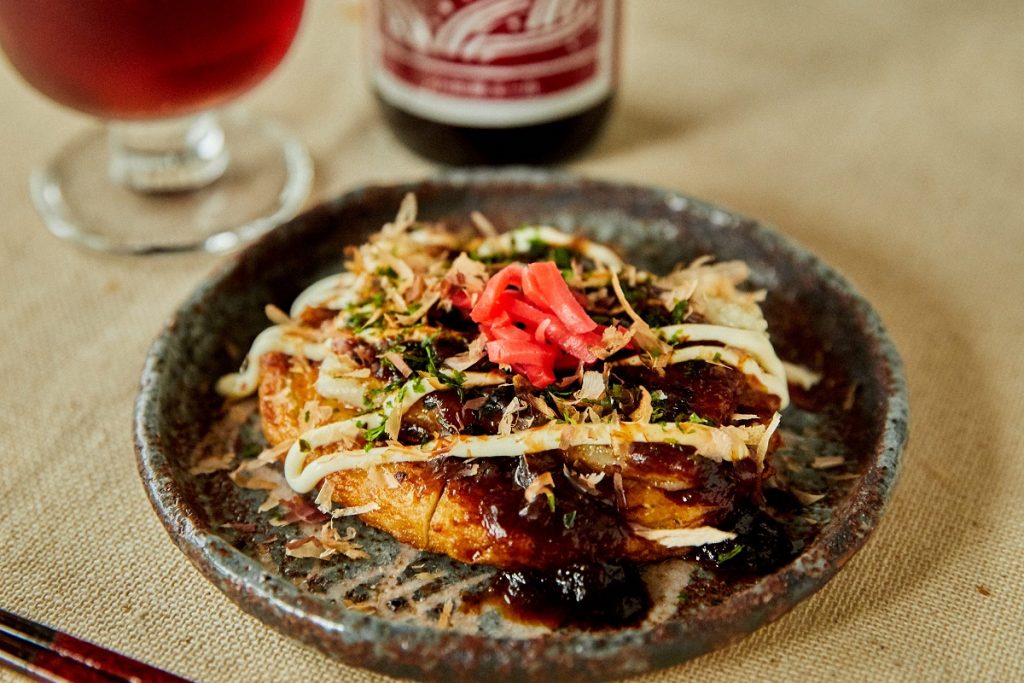Okonomiyaki is a popular and common dish which some consider a soul food to the Japanese. The dish name itself can be loosely translated as “What you like, cooked” and is usually described as a savory pancake. These savory dishes are often flour based and can have many different types of toppings including, mochi, seafood, cheese, pork, eggs, and even noodles.
The official history and development of okonomiyaki in Japan is a bit unclear, but the dish became popular in its current form in the 1930`s. This was a time when rice was in short supply and the flour batter based okonomiyaki was filling and could be mixed with a variety of different ingredients.
Okonomiyaki is popular throughout the country, but has distinct flavors and styles depending on region. The Kansai-style okonomiyaki and Hiroshima-style okonomiyaki became quite popular, but I would like to introduce a new style Odawara okonomiyaki made with a delicious kamaboko base. Suzuhiro’s Kamaboko is made with wild fish and all natural ingredients so you can enjoy a different taste from flour-based okonomiyaki. It is protein-rich with the plumpness and umami of kamaboko.
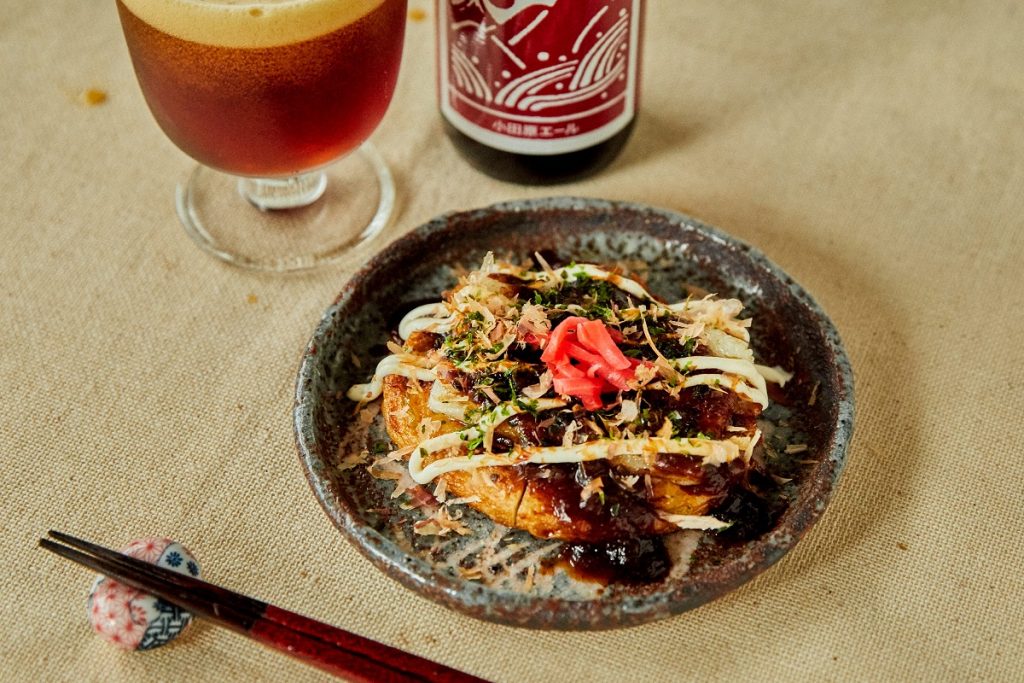
This time, I used Suzuhiro’s Okonomi and lightly roasted it. Okonomi is made with wild fish, squid, corn and all other flavorful ingredients so you only need to just prepare the toppings.
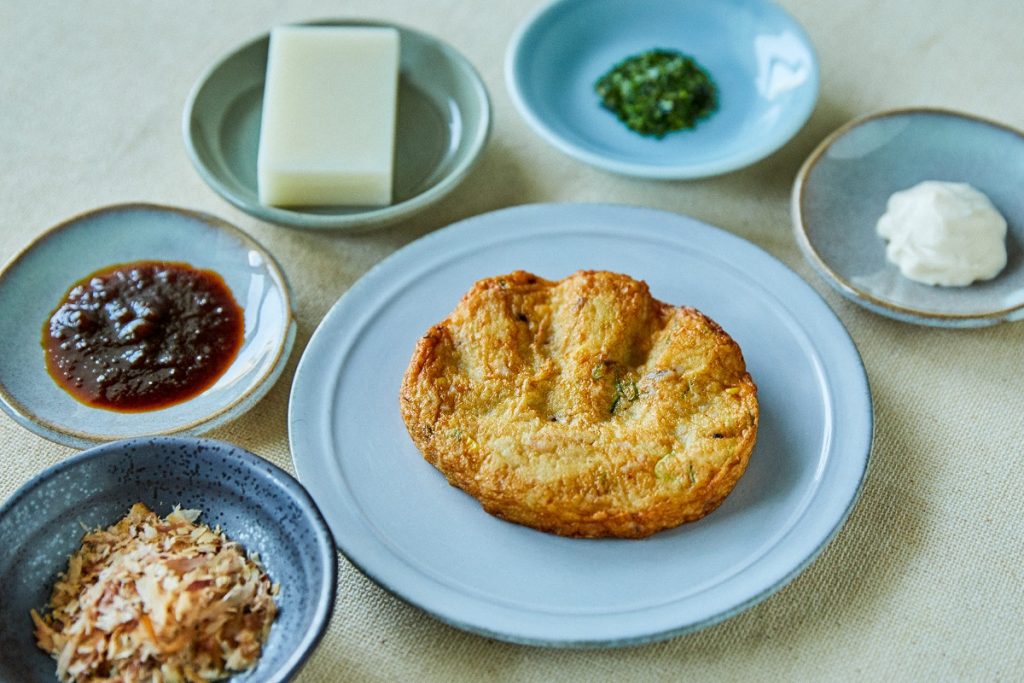
Ingredients
1 piece of “Okonomi” (cut into ¼ pieces)
1 piece of mochi rice cake
Appropriate amount of bonito flakes
A little bit of aonori seaweed (green laver)
Mayonnaise to top
Red ginger to top
Otafuku Okonomiyaki sauce (or Worcestershire Sauce)
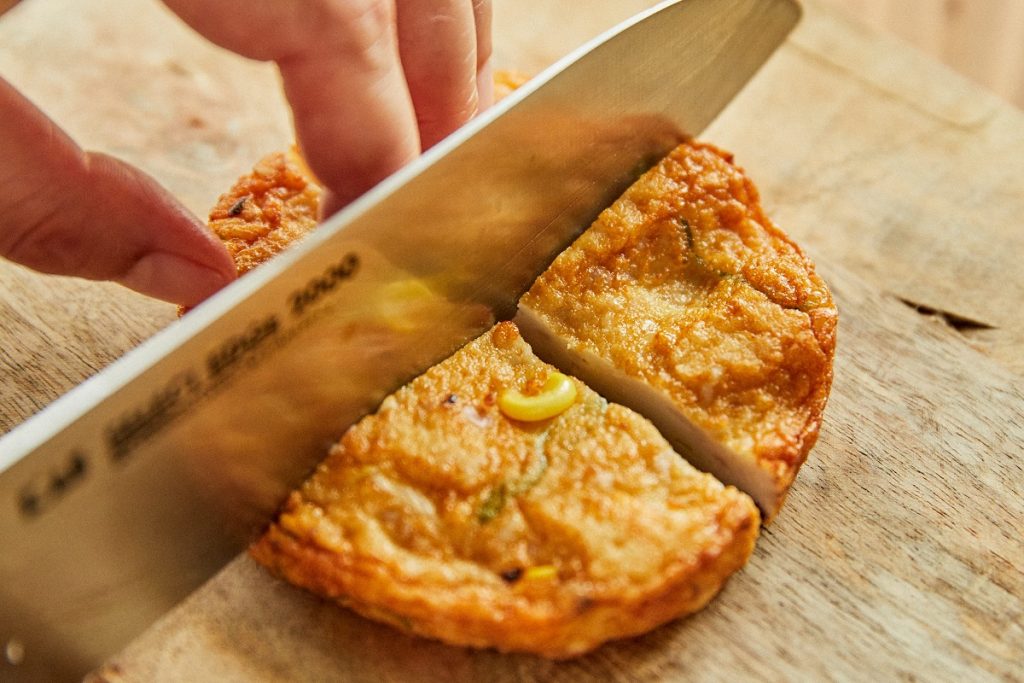
How to Make
1: Cut a piece of “Okonomi” into 4 equal pieces.
2: Cut the rice cake into two thin slices (the thinner the slice, the easier it is to melt).
3: Place the thinly sliced rice cake on the “Okonomi” and bake in a toaster oven at 180 degrees for about 3 minutes or until the mochi is melted.
4: Finish with sauce, mayonnaise, bonito flakes, aonori seaweed, and garnish with red ginger.
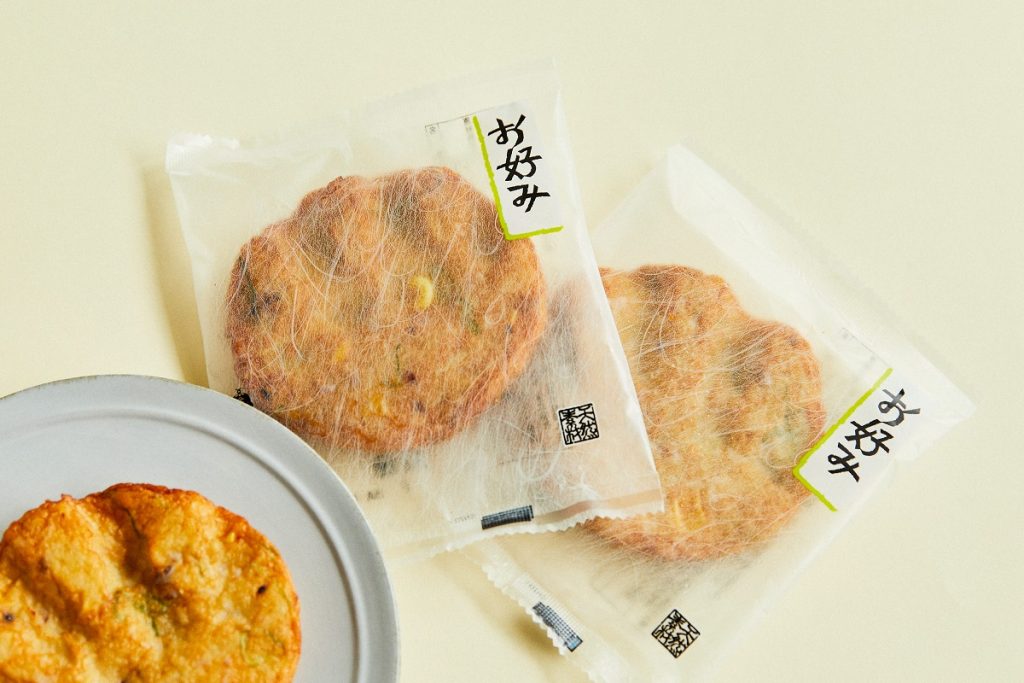
Using Japanese Rice Oil
The oil used in “Okonomi” is domestic rice oil. It contains almost no linolenic acid, which promotes oxidation, so it keeps fried foods tastier. We use this oil sparingly, replacing it with new oil often when making our fried products, so the result is light and not greasy kamaboko.
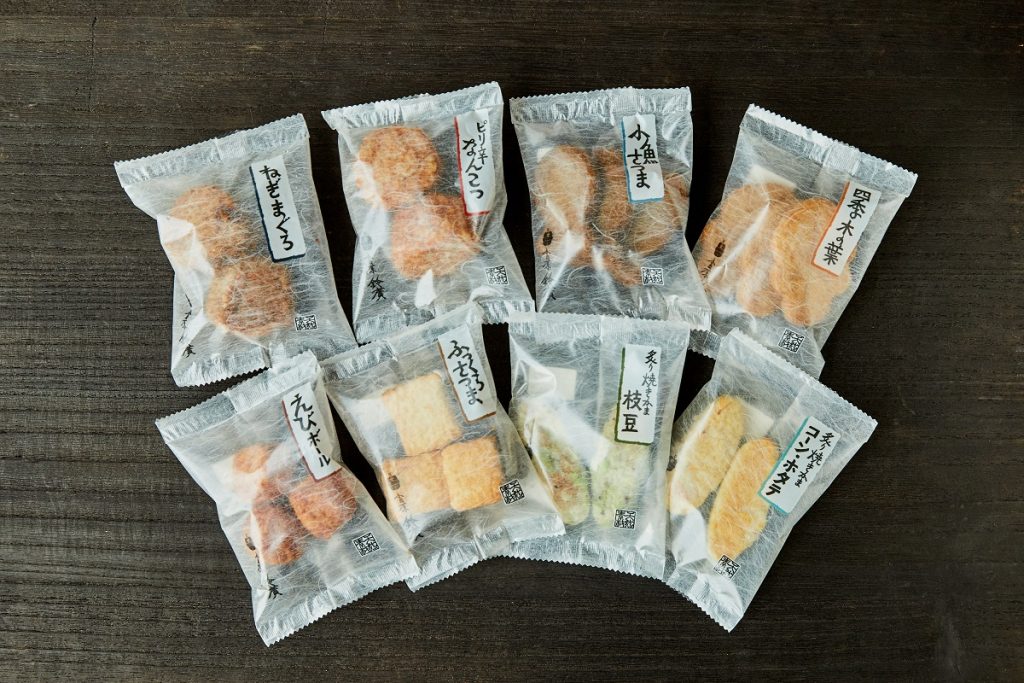
Choose from 10 types of Kamaboko
There are more tasty items made by Suzuhiro. Here are the descriptions in order from top left to right, then from bottom left to right.
Fukkura Satsuma: Thick fried fish paste made of white fish paste, soybean flour and yams. It is the softest and fluffiest of the ten choices.
Small fish satsuma: White fish surimi mixed with sardine fish meat. Rich flavor of fish.
Shikki Kinoha: Ginger-scented, plump and supple.
Seared Edamame: Edamame with a delightful texture and tangy black pepper accents.
Seared grilled kamaboko with corn and scallops: The sweetness of corn and the flavor of scallops are packed into this dish.
Shrimp: Elegant surimi mixed with peeled shrimp. A marriage of the plump texture of the shrimp and the soft surimi.
Negi Maguro: A satisfying bite of tuna and scallions mixed together and deep fried in rice oil. The aroma of scallions and crunchy texture.
Spicy Cartilage: A spicy fried fish cake with the texture of chicken cartilage.
Fukkura Satsuma: Thick fried fish paste made of white fish paste, soybean flour and yams. It is the softest and fluffiest of the ten choices.
Small fish satsuma: White fish surimi mixed with sardine fish meat. Rich flavor of fish.
Shikki Kinoha: Ginger-scented, plump and supple.
Seared Edamame: Edamame with a delightful texture and tangy black pepper accents.
Seared grilled kamaboko with corn and scallops: The sweetness of corn and the flavor of scallops are packed into this dish.
Shrimp: Elegant surimi mixed with peeled shrimp. A marriage of the plump texture of the shrimp and the soft surimi.
Negi Maguro: A satisfying bite of tuna and scallions mixed together and deep fried in rice oil. The aroma of scallions and crunchy texture.
Spicy Cartilage: A spicy fried fish cake with the texture of chicken cartilage.
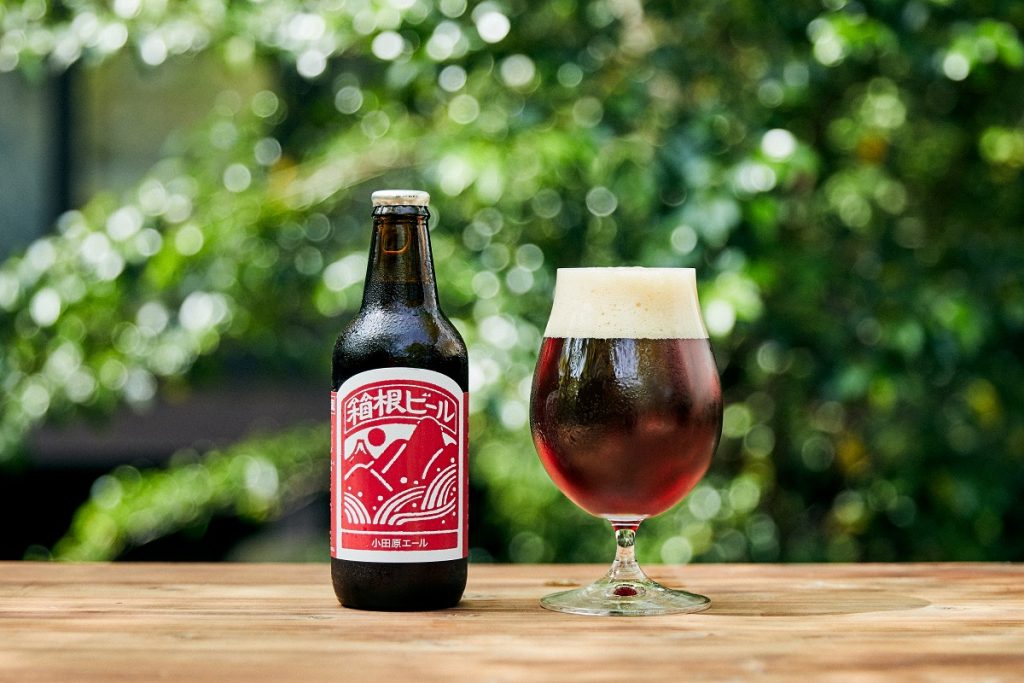
This time, we paired our okonomiyaki with the local Odawara Ale brewed by Hakone beer (Suzuhiro’s brewery). The use of caramelized malt gives it a fruity aroma and deep flavor that goes well with the sweetness of the fried fish cake and sauce.
Hakone Beer’s Odawara Ale is brewed with spring water from the Hakone Fuji-Tanzan water system, having been filtered through the earth, containing no iron which gives our beer a clean, uncluttered taste. Many ale beers have a unique taste, but Odawara Ale aims to be a beer that goes well with seafood and fish cakes, local Odawara specialities.
Photos by Hiyori Ikai, Recipe by Hirozumi Ogawa, Written by Kaeko Liff, Translated by Jeff Garrish
